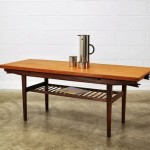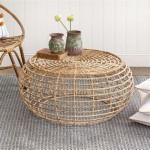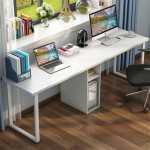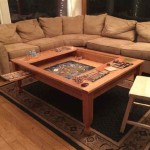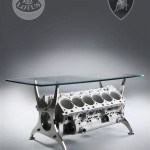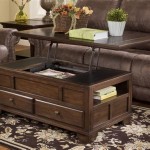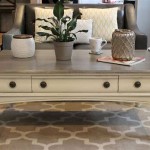All About Mid-Century Modern Coffee Tables: A Guide to Design
Mid-Century Modern (MCM) design, a movement that flourished from roughly the mid-1940s to the late 1960s, continues to captivate design enthusiasts with its clean lines, organic shapes, and emphasis on functionality. Among the furniture pieces central to this aesthetic, the coffee table stands out. More than just a surface to rest beverages, the MCM coffee table embodies the era's design philosophy, serving as both a functional object and a statement piece.
Understanding the defining characteristics of MCM coffee tables is key to appreciating their enduring appeal and successfully integrating them into contemporary spaces. This guide delves into the core elements of their design, the materials used, and the variations that emerged during the period, offering a comprehensive overview for collectors, designers, and anyone seeking to understand this iconic furniture form.
Key Design Principles of Mid-Century Modern Coffee Tables
Several fundamental design principles underpin the characteristic look and feel of MCM coffee tables. These principles prioritize simplicity, functionality, and the integration of natural elements.
Minimalism and Clean Lines: A hallmark of MCM design is its rejection of excessive ornamentation. Coffee tables from this era typically feature simple, geometric forms, characterized by clean lines and an absence of elaborate detailing. This emphasis on minimalism allows the materials and craftsmanship to take center stage, resulting in pieces that are both visually appealing and unobtrusive.
Emphasis on Functionality: Beyond aesthetics, MCM design prioritizes practicality. Coffee tables were conceived as highly functional pieces, designed to serve a specific purpose within the living space. While styles varied, consideration was always given to optimal height, surface area, and storage options. Some models incorporated drawers, shelves, or even lift-top mechanisms to enhance their utility.
Organic Shapes and Natural Forms: While minimalist in their overall design, MCM coffee tables often incorporate organic shapes and forms inspired by nature. Rounded edges, tapered legs, and kidney-shaped tabletops were common, adding a touch of softness and fluidity to the otherwise geometric designs. This interplay between geometric and organic elements is a defining characteristic of the style.
Integration of Negative Space: MCM designers understood the importance of negative space in creating a balanced and harmonious composition. Coffee tables were often designed with open frameworks, allowing light and air to circulate, giving the illusion of lightness and preventing the piece from feeling visually heavy. This approach contributes to the overall sense of spaciousness and airiness that is characteristic of MCM interiors.
Materials Commonly Used in Mid-Century Modern Coffee Tables
The choice of materials played a crucial role in defining the aesthetic and durability of MCM coffee tables. Designers favored natural materials and innovative manufacturing techniques to create pieces that were both beautiful and long-lasting.
Wood: Wood was the dominant material used in MCM coffee table construction. Teak, walnut, and birch were particularly popular due to their rich colors, attractive grain patterns, and durability. Solid wood was often used for the tabletop and frame, while veneers were employed to create curved surfaces and intricate detailing. The natural warmth and texture of wood complemented the overall minimalist aesthetic, adding a touch of organic beauty to the design.
Metal: Metal accents were often incorporated into MCM coffee tables to add visual interest and structural support. Chrome, brass, and steel were commonly used for legs, frames, and decorative hardware. The sleek, polished surfaces of these metals provided a striking contrast to the warmth of the wood, creating a dynamic and visually appealing combination. Metal legs were often tapered or hairpin-shaped, further emphasizing the clean lines and minimalist aesthetic.
Glass: Glass tabletops were another common feature of MCM coffee tables. Clear or tinted glass provided a clean, modern look and allowed the underlying framework to be visible. Glass tabletops were typically tempered for safety and durability, and were often paired with wood or metal bases. The use of glass contributed to the overall sense of lightness and airiness that characterized MCM design.
Laminates and Plastics: As new manufacturing techniques emerged, designers began experimenting with laminates and plastics. These materials offered a cost-effective alternative to solid wood and allowed for greater design flexibility. Laminates were often used to create durable, easy-to-clean surfaces, while molded plastic components were used for legs and other decorative elements. While not as prevalent as wood, these materials played a significant role in expanding the range of styles and price points available during the MCM era.
Variations and Notable Styles of Mid-Century Modern Coffee Tables
Within the broader category of MCM coffee tables, a range of styles and variations emerged, reflecting the diverse influences and design philosophies of the period. Several notable styles stand out for their unique characteristics and enduring appeal.
"Boomerang" or Kidney-Shaped Coffee Tables: These tables, easily recognizable by their asymmetrical, curved tabletops, represent a playful and distinctly modern interpretation of the traditional coffee table form. Inspired by organic shapes and atomic age designs, they often feature wood or laminate surfaces and tapered legs. Their unconventional shape makes them a focal point in any room.
Danish Modern Coffee Tables: Characterized by exceptional craftsmanship and a focus on natural materials, Danish Modern coffee tables are known for their understated elegance and functional design. Typically crafted from solid teak or rosewood, these tables often feature clean lines, gently curved edges, and subtle detailing. They embody the principles of Scandinavian design, emphasizing simplicity, functionality, and beauty.
"Surfboard" Coffee Tables: Resembling the shape of a surfboard, these tables feature a long, narrow tabletop with rounded ends. Often crafted from wood or laminate, they are supported by slender, tapered legs. Their elongated shape makes them ideal for larger living spaces, and their minimalist design complements a variety of interior styles.
Tile-Top Coffee Tables: These tables feature a tabletop adorned with ceramic or mosaic tiles, adding a touch of color and texture to the design. The tiles are typically set within a wood or metal frame, creating a durable and visually striking surface. Tile-top coffee tables were popular in the 1960s and 1970s and offer a unique and eclectic alternative to traditional wood-top designs.
Coffee Tables with Built-in Storage: Functionality was a key concern during the MCM era, leading to the creation of coffee tables with integrated storage solutions. These models often feature drawers, shelves, or lift-top compartments, providing a convenient place to store books, magazines, remote controls, and other everyday items. Storage coffee tables were particularly popular in smaller homes and apartments, where space was at a premium.
Identifying specific designers and manufacturers can further refine the understanding of MCM coffee table design. Names such as George Nelson, Charles and Ray Eames, and Florence Knoll, along with manufacturers like Herman Miller and Knoll, are synonymous with the era and produced iconic coffee table designs that remain highly sought after today. Researching these designers and brands can provide valuable insights into the history and evolution of MCM coffee tables.
Integrating a mid-century modern coffee table into a contemporary space requires careful consideration of scale, proportion, and material coordination. The table should complement the existing furniture and décor, while also serving as a focal point in the room. Mixing MCM pieces with contemporary elements can create a dynamic and visually interesting interior, but it's important to maintain a sense of balance and harmony. The enduring appeal of the MCM coffee table lies in its ability to seamlessly blend form and function, adding a touch of timeless elegance to any living space. Careful research and attention to detail will ensure the selection of a piece that not only enhances the aesthetic of the room but also reflects the design principles and values of the Mid-Century Modern movement.

What Is Mid Century Modern Interior Design

Ping Guide 10 Midcentury Coffee Tables For Every Budget Curbly

Mid Century Modern Our Complete Guide Mobilia

The Ultimate Guide To Mid Century Modern Decor

Mid Century Modern Guide Decor Design Tips

Standard Coffee Table Size 2025 Ultimate Guide

25 Cozy Mid Century Modern Living Room Ideas

Mid Century Inspired Coffee Table Caravana Furniture

What Is Mid Century Modern Style Living Spaces

What Is Mid Century Modern Interior Design
Related Posts

